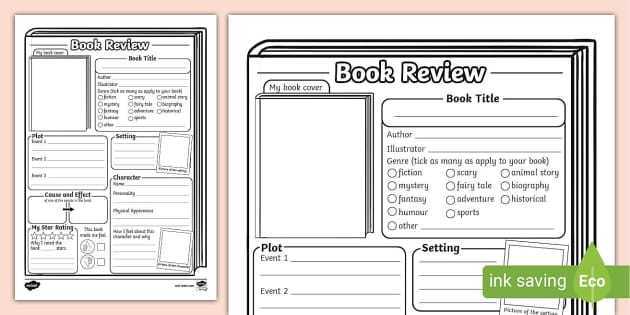Introduction to Novel Reviews
Reviewing novels is an art that combines critical analysis with personal reflection. A well-crafted review not only provides a summary of the plot but also delves into the themes, character development, and the author’s writing style. This article will explore various aspects of novel reviews, providing detailed insights and examples to help you understand how to write a comprehensive review.
Understanding the Structure of a Novel Review
A novel review typically follows a structured format to ensure all critical elements are covered. Here are the main components:
- Introduction: This section introduces the novel, including the title, author, and a brief overview of the plot.
- Summary: A concise summary of the novel’s plot without giving away any spoilers.
- Analysis: This is the heart of the review, where you analyze the themes, characters, and writing style.
- Evaluation: Here, you provide your personal opinion on the novel, discussing its strengths and weaknesses.
- Conclusion: A brief wrap-up of your thoughts and a recommendation for potential readers.
Example Review: "To Kill a Mockingbird" by Harper Lee
Introduction
"To Kill a Mockingbird" is a classic novel written by Harper Lee, first published in 1960. The novel is set in the 1930s in the fictional town of Maycomb, Alabama, and addresses serious issues such as racial injustice and moral growth.
Summary
The story is narrated by Scout Finch, a young girl whose father, Atticus Finch, is a lawyer defending a black man, Tom Robinson, accused of raping a white woman. Through Scout’s eyes, we witness the prejudices and injustices of the time, as well as the moral courage displayed by her father.
Analysis
Themes: The novel explores themes of racial injustice, moral growth, and the loss of innocence. Harper Lee uses the character of Atticus Finch to embody the fight against racial prejudice, while Scout’s journey represents the transition from innocence to a more complex understanding of morality.
Characters: The characters in "To Kill a Mockingbird" are richly developed. Atticus Finch is portrayed as a paragon of virtue, while Scout and her brother Jem undergo significant growth throughout the novel. The supporting characters, such as Boo Radley and Tom Robinson, add depth to the story and highlight the various facets of human nature.
Writing Style: Harper Lee’s writing is both evocative and accessible. She uses a child’s perspective to tackle complex issues, making the novel both poignant and thought-provoking. Her use of Southern dialect and vivid descriptions brings the setting to life.
Evaluation
"To Kill a Mockingbird" is a powerful and moving novel that remains relevant today. Its exploration of themes such as racial injustice and moral integrity resonates with readers of all ages. The characters are well-developed, and the writing is both engaging and thought-provoking. However, some readers may find the pacing slow, particularly in the first half of the novel.
Example Review: "1984" by George Orwell
Introduction
"1984" is a dystopian novel by George Orwell, published in 1949. The novel is set in a totalitarian society where the government, led by Big Brother, exercises complete control over its citizens.
Summary
The protagonist, Winston Smith, works for the Party rewriting history to fit its propaganda. As he becomes increasingly disillusioned with the regime, he begins to rebel, seeking truth and freedom. However, his actions lead to severe consequences.
Analysis
Themes: "1984" explores themes of totalitarianism, surveillance, and the manipulation of truth. Orwell’s portrayal of a society where individual freedom is suppressed and reality is controlled by the state serves as a powerful warning against the dangers of totalitarianism.
Characters: Winston Smith is a complex character whose internal struggle against the oppressive regime forms the core of the novel. Other characters, such as Julia and O’Brien, represent different aspects of the Party’s control and the human desire for freedom.
Writing Style: Orwell’s writing is stark and direct, reflecting the bleakness of the world he describes. His use of Newspeak, a language designed to limit free thought, is particularly effective in illustrating the extent of the Party’s control.
Evaluation
"1984" is a chilling and thought-provoking novel that remains relevant in today’s world. Its exploration of themes such as surveillance and the manipulation of truth is particularly pertinent in the age of digital information. The characters are well-drawn, and the writing is powerful and evocative. However, the novel’s bleakness may be off-putting for some readers.
Example Review: "Pride and Prejudice" by Jane Austen
Introduction
"Pride and Prejudice" is a romantic novel by Jane Austen, first published in 1813. The novel is set in the early 19th century and follows the life of Elizabeth Bennet as she navigates issues of marriage, morality, and social class.
Summary
The story revolves around Elizabeth Bennet and her interactions with the wealthy and aloof Mr. Darcy. Despite initial misunderstandings and prejudices, Elizabeth and Darcy come to understand and love each other, overcoming the societal expectations of their time.
Analysis
Themes: The novel explores themes of love, marriage, and social class. Austen critiques the societal norms of her time, particularly the emphasis on marriage as a means of securing social status and financial security.
Characters: Elizabeth Bennet is a strong and independent character whose wit and intelligence make her a memorable protagonist. Mr. Darcy, initially perceived as proud and aloof, undergoes significant character development, revealing his true nature as honorable and caring.
Writing Style: Austen’s writing is characterized by its wit and irony. Her keen observations of social behavior and her ability to create complex, relatable characters make "Pride and Prejudice" a timeless classic.
Evaluation
"Pride and Prejudice" is a delightful and insightful novel that continues to captivate readers. Its exploration of themes such as love and social class is both entertaining and thought-provoking. The characters are well-developed, and Austen’s writing is both witty and engaging. However, some readers may find the novel’s focus on marriage and social status less relevant in today’s context.
Example Review: "The Great Gatsby" by F. Scott Fitzgerald
Introduction
"The Great Gatsby" is a novel by F. Scott Fitzgerald, published in 1925. Set in the Jazz Age, the novel explores themes of wealth, love, and the American Dream.
Summary
The story is narrated by Nick Carraway, who becomes friends with the mysterious and wealthy Jay Gatsby. Gatsby’s obsession with rekindling his past romance with Daisy Buchanan leads to tragic consequences.
Analysis
Themes: "The Great Gatsby" explores themes of wealth, love, and the American Dream. Fitzgerald critiques the moral decay of society and the empty pursuit of wealth and status.
Characters: Jay Gatsby is a complex character whose idealism and obsession with the past drive the novel’s plot. Daisy Buchanan represents the unattainable ideal, while Nick Carraway serves as the novel’s moral compass.
Writing Style: Fitzgerald’s writing is lyrical and evocative, capturing the glamour and excess of the Jazz Age. His use of symbolism, such as the green light at the end of Daisy’s dock, adds depth to the narrative.
Evaluation
"The Great Gatsby" is a beautifully written and poignant novel that continues to resonate with readers. Its exploration of themes such as wealth and the American Dream is both timeless and relevant. The characters are well-drawn, and Fitzgerald’s writing is both elegant and powerful. However, some readers may find the novel’s focus on the excesses of the Jazz Age less relatable.
Example Review: "The Catcher in the Rye" by J.D. Salinger
Introduction
"The Catcher in the Rye" is a novel by J.D. Salinger, published in 1951. The novel follows the experiences of Holden Caulfield, a teenager who becomes disillusioned with the adult world.
Summary
Holden Caulfield narrates his experiences after being expelled from his prep school. As he wanders New York City, he grapples with feelings of alienation and a desire to protect the innocence of children.
Analysis
Themes: The novel explores themes of alienation, innocence, and the struggles of adolescence. Salinger captures the angst and confusion of teenage life, making Holden a relatable and enduring character.
Characters: Holden Caulfield is a complex and deeply flawed character whose cynicism and vulnerability drive the novel. His interactions with other characters, such as his sister Phoebe, highlight his internal struggle.
Writing Style: Salinger’s writing is characterized by its conversational tone and use of colloquial language. This style effectively captures Holden’s voice and makes the novel accessible to readers.
Evaluation
"The Catcher in the Rye" is a powerful and introspective novel that continues to resonate with readers. Its exploration of themes such as alienation and innocence is both poignant and relatable. The characters are well-developed, and Salinger’s writing is both engaging and authentic. However, some readers may find Holden’s cynicism and the novel’s lack of a traditional plot off-putting.
Example Review: "Harry Potter and the Sorcerer’s Stone" by J.K. Rowling
Introduction
"Harry Potter and the Sorcerer’s Stone" is the first novel in the Harry Potter series by J.K. Rowling, published in 1997. The novel introduces readers to the magical world of Hogwarts and the adventures of Harry Potter.
Summary
Harry Potter, a young boy who discovers he is a wizard, attends Hogwarts School of Witchcraft and Wizardry. There, he makes friends, learns about magic, and uncovers the truth about his parents’ death





